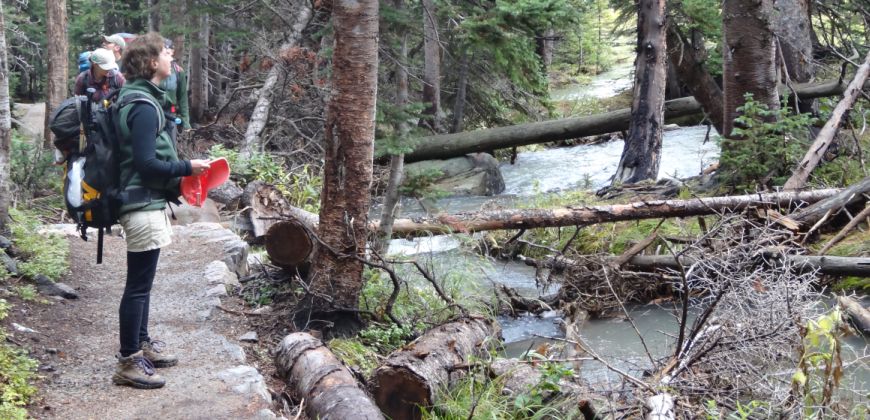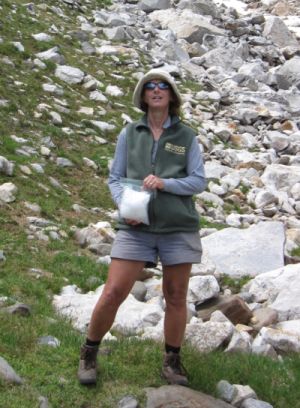‘The largest global change you’ve never heard of’
by Jennifer Dimas | March 12, 2015 8:19 AM

When discussing climate change and its causes, most people think of carbon dioxide. But are there other, less well-known factors that could be causing just as much damage to our environment?
One of the largest global changes
 “Nitrogen pollution is one of the largest global changes you’ve never heard of,” said Jill Baron, ecosystem ecologist with the U.S. Geological Survey and a Senior Research Ecologist with CSU’s Natural Resource Ecology Laboratory.
“Nitrogen pollution is one of the largest global changes you’ve never heard of,” said Jill Baron, ecosystem ecologist with the U.S. Geological Survey and a Senior Research Ecologist with CSU’s Natural Resource Ecology Laboratory.
Baron was recently named the new director of the North American Nitrogen Center, one of five globally distributed centers of the International Nitrogen Initiative.
“I am excited by the idea of promoting the study, awareness and management of reactive nitrogen as a global change issue connected with other major global challenges,” said Baron, who began the position in January.
Baron first came to CSU in 1981 while working for the National Park Service. Through a grant to study the effects of acid rain on Rocky Mountain National Park, she was offered laboratory space at CSU’s Natural Resource Ecology Laboratory. She never left. In fact, the research program she grew and worked on resulted in her doctoral dissertation.
National leader in ecosystem science
Since coming to CSU, Baron has become a national leader in ecosystem science. She is the founder and co-director of the John Wesley Powell Center for Earth System Science Analysis and Synthesis. Baron served as the president of the Ecological Society of America in 2014. She is active in U.S. National Climate Assessment efforts and has given testimony to Congress on western acid rain and climate change issues.
Q & A
Baron answered the following questions about the global challenges of nitrogen pollution and her work as president of the ESA.
Is the North American Nitrogen Center a physical facility at CSU?
The NANC is virtual…and unfunded! It is up to the director to create something out of nothing in support of the goal of “optimizing the benefits of nitrogen while minimizing the damage.” Previous directors have managed to accomplish quite a lot by bringing together groups of experts and practitioners. CSU is a logical place for the center because we have outstanding researchers looking at all aspects of nitrogen use and nitrogen cycling. I hope the center can be used to leverage more funding for CSU research that in turn will help us meet our NANC goal.
Why have most people not heard about the global challenge of nitrogen pollution?
While many people have seen (or smelled) lakes and reservoirs with too many nutrients – they are green and scummy and smell terrible – and others have read about the dead zones in the Gulf of Mexico, or about the changes we’ve seen to alpine plants and lake algae in Rocky Mountain National Park, I don’t think they realize it is all part of the same problem. With our ozone and infamous “brown cloud” of pollution, nitrogen is a large part of that problem, too. The brown cloud is not just ugly; it causes respiratory disease. Some nitrogen that escapes into the atmosphere is a far more potent greenhouse gas than carbon dioxide. The complicated nature of the damage from escaped nitrogen makes it harder to grasp than climate change, yet humankind has altered the global nitrogen cycle even more than we have altered the global carbon cycle. More nitrogen is available worldwide from human sources than all natural sources combined.. Our alteration of the global nitrogen cycle started out with good intentions: nitrogen in fertilizer produces more food and feeds more people. Nitrogen is a critical part of improving the lives of billions of people, but when it escapes to the environment, bad things happen.
How can nitrogen pollution be better managed?
Among the benefits to cutting our greenhouse gas emissions from power plants is lower production of nitrogen escaping to the atmosphere. This is happening as we switch from coal to natural gas, wind and solar. As cars come onto the highways meeting new standards they, too, produce far less nitrogen pollution than before. A co-benefit of managing carbon is reducing the impact from nitrogen pollution. Precision agriculture has the potential to lower farmer’s costs while still providing high crop yields. Research is being done to try to reduce nitrogen loss from livestock in our dairies and industrial feedlots. Our personal behaviors also can help manage the damage caused by too much nitrogen in the environment: reducing our energy and meat consumption and using alternate transportation are all helpful. In the end, however, nitrogen management is a vexing problem without a simple solution.
What has been your focus as the president of the Ecological Society of America?
I was president of ESA in 2014 and am now past-president. The ESA is 100 years old this year and is the nation’s largest body of professional ecologists. My focus, as with other recent presidents, has been to use ecological science in support of society. Over the next decade or two, society has a window of opportunity to radically redefine our relationship with the planet to reduce risks of dangerous global changes. Ecologists can help by providing expert knowledge.
While leading the ESA since 2013, what have you seen as a significant emerging global challenge?
The good news is that there have been no surprises. The bad news is that we have known what to expect from greenhouse gas emissions, excess nitrogen in the environment and massive land use change for many years, and those expectations are now reality. Our great challenge is figuring out effective management tools and implementing them without disrupting all of society.
How has your work at CSU helped propel you to these national leadership positions?
CSU has meant everything to my success. No other university I know of trains its students to work collaboratively across disciplines to solve societal issues. These were the gifts CSU gave me when I arrived in the 1980s and these are the gifts it gives students today. I was so fortunate to learn from the giants in ecosystem ecology how to think big and across disciplines, and apply that knowledge toward solving societal problems.
Source URL: https://source.colostate.edu/the-largest-global-change-youve-never-heard-of/
Copyright ©2024 SOURCE unless otherwise noted.